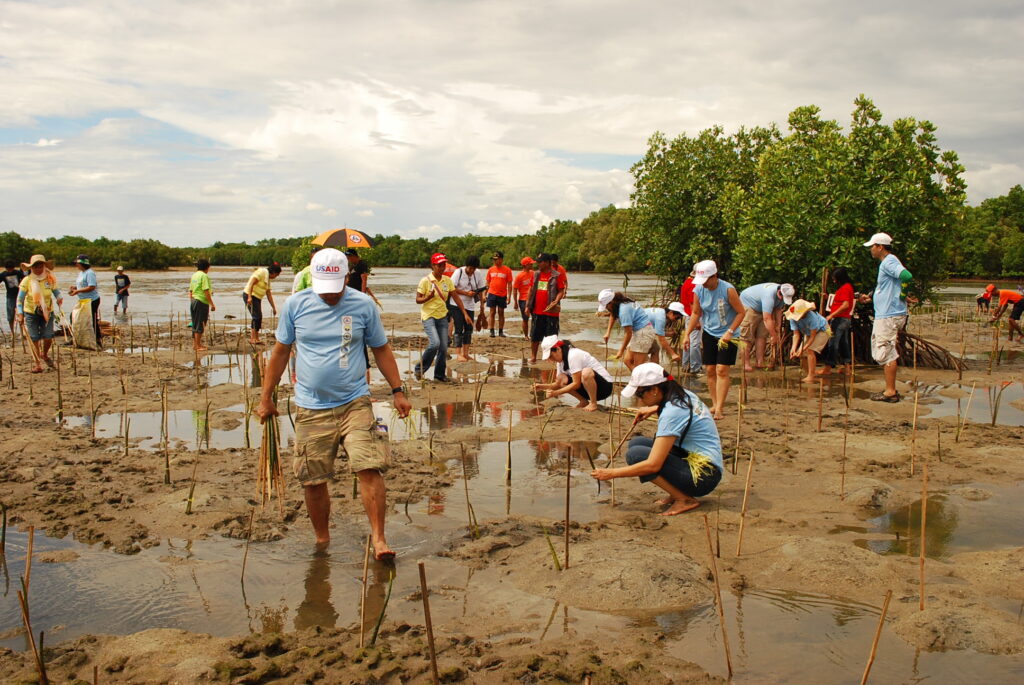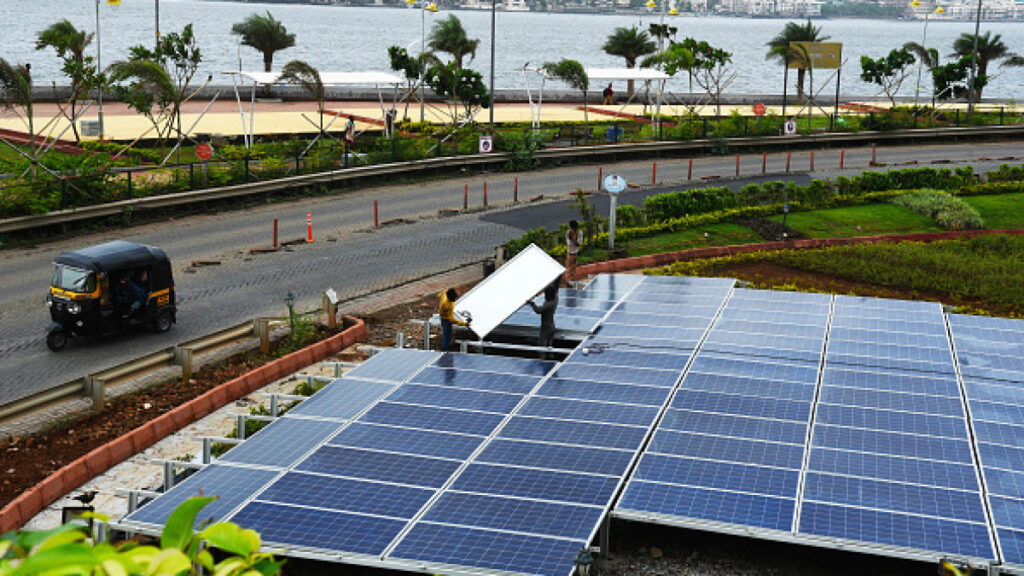India has seen a rise in the severity and frequency of extreme weather events brought on by climate change over the past few years. Extreme river flooding is predicted to affect an extra 13–34 million people by the 2040s if no adaptation measures are taken, and 18 million people would be exposed to sea-level rise-induced flooding every year. Climate extremes have the potential to exacerbate droughts and boost precipitation amounts during periods of intense rainfall. Heat waves might affect 160–200 million people yearly due to a projected increase of over 1.1–4.1 degrees Celsius by the end of the century, and a heat stress-induced drop in productivity could lead to 34 million job losses. For India, the yearly expenditure in adaption measures alone is projected to be $46.3 billion.

These results will have significant effects on India’s productivity and economic growth, community health, and access to natural resources. For poor and marginal farmers, coastal and forest communities, minority groups, people without assets, and women in particular, the effects might be disastrous. According to the 2020 ND-GAIN Index, India is ranked 127th out of 182 nations in terms of their sensitivity to the effects of climate change. These vulnerabilities are influenced by or made worse by a variety of socioeconomic and geographic variables.
Socio-economic factors
India’s population of almost 1.2 billion depends on agriculture for a living, either directly or indirectly. 60% of the land is used for agriculture, therefore considerable variation in monsoon patterns will have a big impact on crop output.
Changes in water availability, disease, and pest profiles, soil organic matter, and other variables, among others, will all have an impact on crop yield and food supply as a result of climate change. Increased heat stress will also have an effect on cattle raising, lowering their levels of output. This might result in catastrophic losses in the income and means of subsistence for marginal farmers and rural communities. 90% of India’s labor force is employed in the informal sector, which would be disproportionately impacted by heat stress-induced reductions in working hours, productivity, and earnings.
The capacity of communities to adapt to the negative effects of climate change will also be impacted by other factors such as high levels of multidimensional poverty (nearly a quarter of the population), 150–200 million undernourished people, a burdened health infrastructure, unplanned urbanization, and pressure on energy systems amplified by rising heating and cooling requirements. Given that 80% of rural women in India work in agriculture, that they are less likely than males to own assets or have access to credit, that they are responsible for caring for children, which prevents them from migrating, and that they are more likely to experience violence, particularly during the conflict, women in India will be at a higher risk. Studies also imply that migrants who depend on rain-fed croplands may be driving prospective out-migration from the northern portions of the Indo-Gangetic plain and coastal districts around Mumbai and Chennai.
Geographic factors
The six physiographic areas of India have various climates and climatic vulnerabilities. Communities along India’s 8000 km of coastline, which includes many highly populated and low-lying places, are expected to be threatened by land loss and erosion as a result of sea level rise. River delta areas, which are crucial to the nation’s food security, are among those most at risk from sea level rise brought on by climate change. The disappearance of Himalayan glaciers continues to pose a serious danger to water supplies. This is a significant issue in a nation whose desert, semi-arid, and dry sub-humid areas cover 70% of the country’s landmass.
In order to address the current climate-induced vulnerabilities, particularly those related to agricultural productivity and food security, catastrophe risks, access to resources (water, power, coastal resources, etc.), and human health, adaptation technologies and solutions should be developed and tailored in India.
Although scaling up adaptation technologies and solutions are urgently needed, their uptake is still uneven. One of the major obstacles to their expansion is the communities’ low level of knowledge of these alternatives. Additionally, these solutions must be tailored to the many communities’ unique adaption requirements and local contexts. In the design and execution of adaptations, local groups are frequently underrepresented and given little consideration.
MUST READ – According To An IITR Research, Auto Emissions Increase Air Pollution.
Numerous of the solutions need initial investment and become prohibitively expensive in the absence of suitable financing options. For instance, structural approaches to safeguard against destructive flooding from sea-level rise, micro and drip irrigation systems to reduce crop water demand, construction of floodproof drinking water wells to prevent contamination of water supplies, desalination to increase the amount of water available, grey stormwater management systems to prevent inland flooding, etc. are costly solutions and may require financing. However, the funding for climate adaptation measures is woefully insufficient.
In comparison to present international adaptation finance flows, the adaptation finance gap in poor countries is 5–10 times larger.
Lack of data to guide adaptation strategies, repurposing development activities as adaptation actions that do not address climate risks, a lack of attention to the long-term viability of adaptation solutions, and constrained definitions of successful adaptation outcomes are additional factors that affect the scalability of adaptation solutions.
agricultural extension services in India are being transformed to better support climate adaptation. India’s multi-tiered agricultural extension system has a solid track record of boosting farmer production. By raising knowledge and fostering demand for adaption solutions and practices, this extension system has to be redesigned and recreated to ensure that it focuses on enhancing the resilience of Indian communities.

enhancing the usability and alignment of adaption technologies with local practices and community needs: In order to do this, it is necessary to evaluate the demands of the intended community, raise awareness of these solutions, and match the right technology with the intended users. This ought to be decided after consultation with a range of interested parties who combine technical know-how with viewpoints based on local understanding.
Our work with small-scale farmers and farmer collectives in Maharashtra, Odisha, Jharkhand, and other states shows that involving communities in a consultative process that entails understanding their adaptation needs and selecting the best options from a range of options has been successful in encouraging the adoption of these solutions by farmers and their collectives. The technologies were narrowed down based on comments from more than 50.000 farmers in the state and had a significant focus on strengthening adaptive capacities. The consultation indicated significant adoption hurdles that technology providers must address and informed farmers of the advantages of these solutions.
improving climate adaptation services for agriculture extension services. India has an effective multi-tiered agriculture extension system with a track record of raising Indian farmers’ production. To guarantee that it focuses on enhancing the resilience of Indian communities by raising knowledge and fostering demand for adaptation solutions and practices, this extension system has to be redesigned and recreated.
More user-friendly adaption technologies that are in line with local norms and needs: This necessitates determining the needs of the target community. promoting these solutions and aligning the right technology with the intended users. This should be decided after consulting with diverse stakeholders who offer both technical and local knowledge views. Our work with Maharashtra’s small-holder farmers and farmer collectives. The adoption of these solutions by farmers and their collectives has been successful, as demonstrated by the states of Odisha, Jharkhand, and others. This has been accomplished by involving communities in a consultative process that involves understanding their adaptation needs and selecting the best solutions from the available options.



